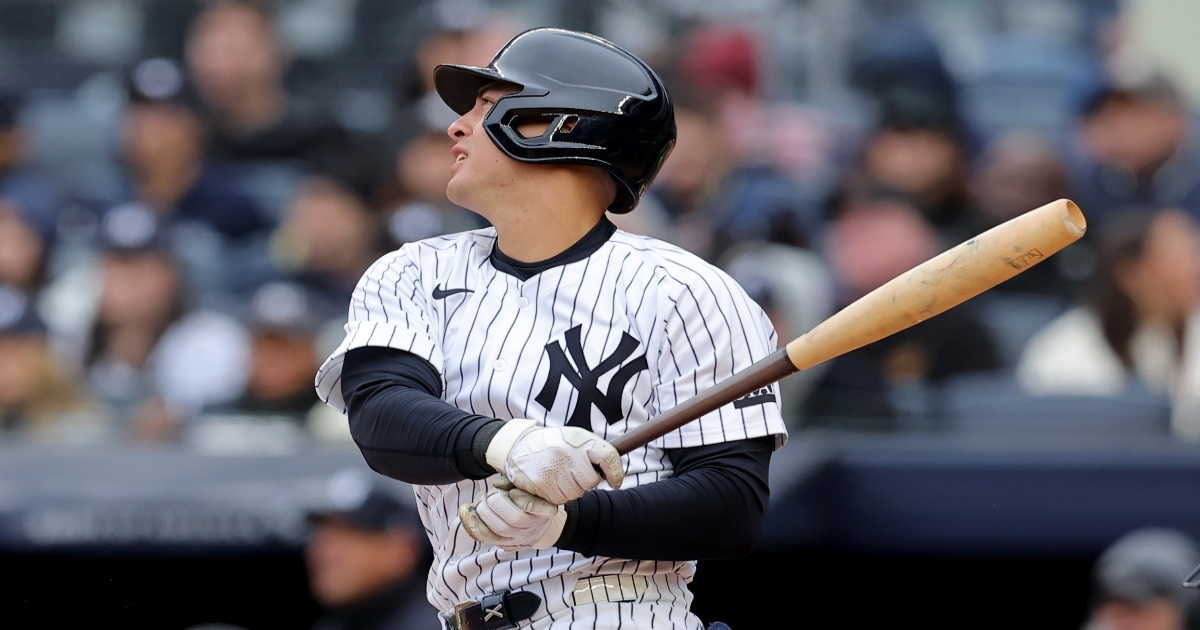Boy, the first week of the 2025 Major League Baseball season has been anything but boring.
We’ve had a suspension for violating the league’s performance-enhancing drug policy from a player who made a big leap in performance in 2024. We’ve had several teams jump out to undefeated starts, like the Dodgers and Padres, with others like the Atlanta Braves yet to pick up their first win. Oh, and we’ve had an entirely new bat shape, infamously debuted by the New York Yankees, sweeping over the game.
The so-called “torpedo,” an entirely new design for the shape and wood distribution for baseball bats, has become the dominant topic of conversation across baseball. Hitters like Anthony Volpe and Jazz Chisholm used it in the Yankees’ opening weekend series against the Milwaukee Brewers, with exceptional results. And more players have jumped on the bandwagon already.
It’s not rocket science, though for a game traditionally loathe to change, it appears that way. Essentially, the new design was created with the goal of moving more weight and wood to parts of the bat where players more frequently make contact. Makes sense, right? And so far, at least anecdotally and in a small sample, the results have validated the concept. Elly De La Cruz from the Cincinnati Reds debuted his torpedo bat in Monday night’s game. Seemed to go fairly well for him.
In a league of copy cats, it’s only a matter of time before more players jump on the bandwagon. So exactly how many more are going to follow suit? Well, the New York Post’s Jon Heyman interviewed Kurt Ainsworth, the Co-founder and CEO of Marucci Bats, one of the biggest bat manufacturers in the business, who said it’s going to be a lot of them. A LOT.
Torpedo Bats Are Here To Stay In MLB
Heyman asked Ainsworth about the torpedo shape, how many players he thinks are currently using them and how many more will soon.
“People are saying, ‘oh it’s unfair for the Yankees,’ but then I’m getting all sorts of things from…Caminero, De La Cruz, Lindor, and what are the numbers right now of guys who are actually using it in game,” Heyman said. “I know you said everybody’s willing to try it, but how many do you think are actually using it?”
“Yeah, I think you’re going to see it across all 30 teams,” Ainsworth said. “So this isn’t one that’s specific to the Yankees, I just think that it got magnified by the Yankees. I mean, Adley Rutschmann used our torpedo and hit three home runs for the Orioles. And I think you’re going to see players across the board using it. So I think you’re probably looking at 10 or 15 percent adoption now, honestly, and I think you’re going to see more and more people test it and try it. I do think that this excitement for the game has now even bled into Major League Baseball. And these guys are the greatest hitters in the world, but they’re seeing the success saying, ‘Man if it can help me, we’re willing to try it.'”
“So this is the first time we’ve any players willing to change so much and to try to help their game. So I really, truly think you’re going to see 50+% of the major leagues at least try some sort of a torpedo in the next few weeks.”
More than half the league’s hitters could be using the torpedo bat within a matter of weeks, according to the CEO of a bat manufacturing company. That’s a big deal, and it raises all sorts of important questions for MLB and the future of the sport.
If the small sample-size results do prove to be sustainable over a longer period, what happens to offensive statistics across baseball? Does run-scoring explode? And if so, does Rob Manfred step in with an immediate clarification to existing bat size rules?
It’s obvious that the torpedo bat shape makes more sense for most hitters. Balls hit off the end of the bat have almost no chance of becoming hits thanks to low exit velocities. No matter how much wood and weight is placed there. But contact closer to the handle…that’s much more frequent. As we’re seeing, that contact, with greater wood behind it, can result in solid hits with more line drives and higher exit velocities.
The league right now is clearly in “wait and see” mode. But if 50% of the league is using it in the next few weeks, with exceptional offensive results, that “wait and see” period might need to be short-lived.
